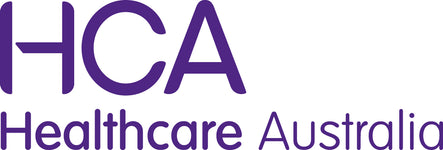ACFI validation red flags - signs you're currently at risk
Although Residential Aged Care Facilities (RACFs) receive funding through the Aged Care Funding Instrument (ACFI), there is also a requirement to provide specific documentation to substantiate claims during the validation process. Considering some validations have meant loss of funding in excess of several hundred thousand dollars per annum, providers can’t afford to rely on results from previous years’ validations; there have been changes to the ACFI User Guide, required assessments, and business rules.
A position of “we don’t over-claim, so we should be okay” is a dangerous sign of complacency. Downgrades are not because of fraudulent activity, but largely because of a lack of supporting evidence or a misinterpretation of the guidelines; as such, the following are indicators of this risk:
There is no transparent list of the complex pain management claims made compared with who is actually receiving ongoing interventions. To meet the requirement of a Directive-4b, consistent ongoing treatment must be provided as required by the resident. Lack of transparency around which residents have had this claim made can lead to a loss of funding of $18,200 p.a. for a single resident. A single downgrade for a Directive-4a claim can lead to a loss of over $10,800 p.a.
There’s been previous question downgrades (even if there was no financial decrease). Depending on the resident’s overall clinical mix and when their claim was actually submitted, even a single question downgrade may in fact have a variety of impacts. For example, a single change to a resident’s ACFI 3 Personal Hygiene claim may (1) have no impact on the domain and therefore no financial impact, (2) have a domain downgrade but a small repayment amount, or (3) have a domain downgrade with a repayment amount that extends back as far as six months (over $7,500). So, unless addressed, a reoccurrence of this exact same problem may in the future have a larger impact. Additionally, regardless of the repayment amount, it should be remembered that’s it not just about the amount paid back to the Department but the future loss in annualised funding. In this case this would be over $15,000 p.a., despite the fact the same downgrade had no financial impact last validation.
There is no documented process for the order of clinical assessments: Unless there is consistency in the approach for completing an ACFI appraisal, especially when there are multiple contributors, this creates significant risk of overlap or contradiction. A residents’ mobility needs, for example, are addressed in assessments that relate to the claims being made in ACFI 1, 2, 3, 4, 7, 9, 10 and 12.5. Unless these assessments are coordinated and reflect each other’s’ findings, this can create incongruence and significant risk of downgrade in multiple areas.
The Cornell Scale for Depression (CSD) is not completed by the ACFI coordinator. The CSD can support the entire ACFI claim, but it also poses a significant risk. The questions in this tool relate to interference with a residents’ ability to function and participate in regular activities. This creates a situation where there is potential to create incongruence with claims made in all other areas of the ACFI; this is especially the case if the assessor is not familiar with the claims being made in all other ACFI questions, or they are not well-versed in ACFI specific definitions and terminology. This single assessment, which may not even be required from an ACFI or clinical perspective, can be simultaneously responsible for downgrades in all three domains. This can equate to as much as $31,900 p.a. for just a single category shift across the board.
Some of the other more obvious red flags relate to situations where:
- Residents eat their meals in their rooms
- Behaviour charts don’t have all four elements completed for each behaviour described
- There is no distinction between pain management and complex pain management
- Residents assist in the showering process
- Multiple codes per line are counted as multiple episodes of behaviours or incontinence
- Verbal refusal of care is claimed related to showering and dressing in the resident’s room
- Care plans are not reviewed in their entirety and updated prior to submission
- Q11 Medication and Q12 Complex Health Care claims are a mathematical impossibility
- Duration and frequency of complex health care interventions are not specified
- Pain management claims include application of heat packs for 20 minutes per week
- More than one person completes assessments, but every word isn’t reviewed for congruency
- Assessments and supporting evidence are not printed out at the time of appraisal
With over 250,000 operational aged care places in Australia, the Government is forced to rely on each provider to accurately determine the correct amount of ACFI subsidy it should be receiving for each resident’s individual care needs. Considering that validation sample sizes are typically 25% of the facility’s residents and can include reviews of claims that are several years old, an objective audit process can provide a significant return on investment. Validation loss is entirely preventable.
If you think you are at risk or would just like to freshen up your ACFI skills, please take a look at the Online ACFI courses developed by HCA by ACFI experts. This could be the economical and convenient opportunity for your facility to receive the funding it deserves.
HCA offers online ACFI training courses as well as consultancy sessions.
